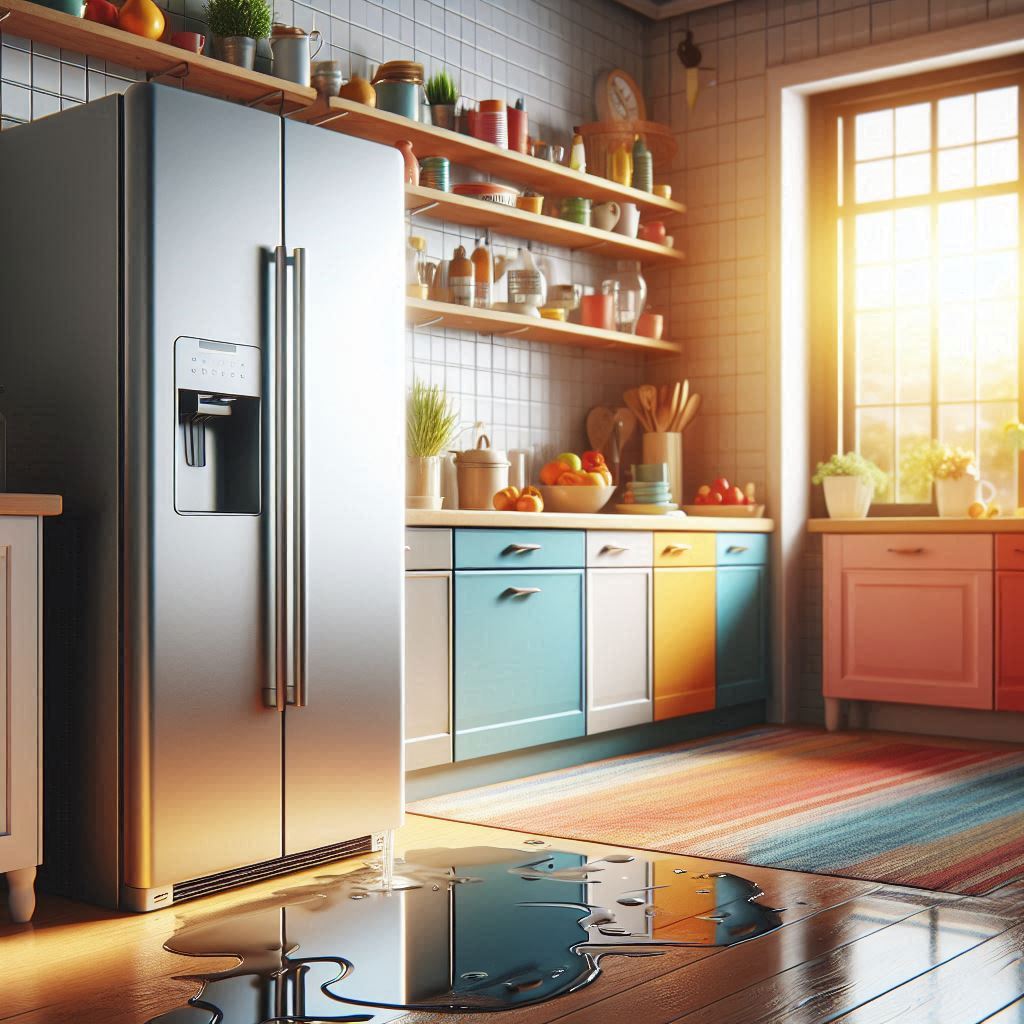A puddle under the fridge is never a welcome sight. Whether you stumbled upon it during a midnight snack run or while cleaning the kitchen, a leaking fridge can be both frustrating and puzzling. Before you panic or assume the worst, let’s break down what a fridge leak might mean—and what you should do next.
Is It a Small or Big Issue?
The answer: it depends. Fridge leaks can be caused by anything from a simple clog to a more serious mechanical issue. The good news is, many fridge leaks are minor and can be fixed without calling in a professional. But ignoring a leak—even a small one—can lead to water damage, mold, or spoiled food, so it’s best to take action quickly.
Common Causes of Fridge Leaks
Here are the most common culprits behind a leaky fridge:
- Clogged or Frozen Defrost Drain (Common, Minor)
Most modern fridges defrost themselves, and the resulting water drains into a pan beneath the appliance. But if the defrost drain is clogged or frozen, the water can back up and drip inside the fridge or underneath.
What to do:
Unplug the fridge and check for a clogged drain at the back. Flush it out with warm water using a turkey baster or pipe cleaner. If there’s ice, gently melt it with a hairdryer or let the fridge sit unplugged for a while.
- Faulty or Misaligned Water Line (Moderate to Major)
If your fridge has a water dispenser or ice maker, it’s connected to your home’s water supply. A cracked, loose, or disconnected line can cause leaks behind or beneath the fridge.
What to do:
Slide the fridge out (carefully) and inspect the water line. If it’s loose, reconnect it. If it’s cracked, you’ll need to replace it. For more complex plumbing issues, it might be best to call a technician.
- Damaged or Overflowing Drain Pan (Minor to Moderate)
That drain pan underneath your fridge catches excess water, but if it’s cracked or overflowing, water can end up on your floor.
What to do:
Remove the drain pan and inspect it. If it’s full, dump the water and clean the pan. If it’s cracked, it needs to be replaced. Luckily, this is a relatively inexpensive part.
- Door Seals Not Closing Properly (Minor)
If warm air sneaks into your fridge due to worn or dirty door seals, it can cause excess condensation—and eventually puddles.
What to do:
Check the seals for debris, cracks, or wear. Clean them with warm soapy water and see if the door closes tightly. If the seal is damaged, you can usually replace it yourself without too much hassle.
- Fridge Is Not Level (Surprisingly Common, Minor)
If your fridge is tilted backward or forward, water from the defrost system might not drain correctly.
What to do:
Use a level to check your fridge’s alignment. Most fridges are meant to tilt slightly back so the doors close easily. Adjust the legs or rollers as needed.
When to Call a Professional
If you’ve checked the basics and the leak persists—or if the water is coming from inside the fridge in a way you can’t trace—it might be time to bring in a technician. Especially if you hear odd noises, notice poor cooling, or see signs of a refrigerant leak (like a chemical smell or oily residue), professional help is a smart move.
Preventing Future Leaks
Once the leak is fixed, a little preventative maintenance can go a long way:
Clean your defrost drain a couple of times a year.
Inspect and clean door seals regularly.
Check your water line for wear or kinks.
Keep the fridge level and avoid overloading shelves.
Final Thoughts
A leaky fridge doesn’t always mean disaster. Often, it’s a small issue you can handle with a little time and elbow grease. But if it’s something more serious, taking care of it quickly can save your kitchen from water damage and your food from spoilage. When in doubt, don’t hesitate to get a pro involved—it’s better than waking up to a kitchen slip-n-slide.


